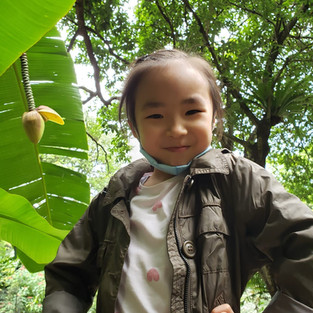[中][ENG] 新常態之下,我的回顧與展望 Looking back and looking ahead at dance in the ‘new normal’
- claudiahkda
- Apr 10, 2021
- 13 min read
Updated: May 6, 2021
新常態之下,我的回顧與展望
編按:為更了解疫情下大家的不同經驗,與及對未來的期盼,我們特別邀請了一眾背景各異,但同樣與舞蹈有密切接觸的朋友,來回答以下的兩條問題:
過去一年,在你自己的舞蹈創作/學習/表演/觀賞中,最大的挑戰/困難是甚麼?
面對要與疫症共存的新常態,你認為未來的舞蹈創作/學習/表演/觀賞會有怎樣的改變呢?
(先後以受訪者中文姓名筆劃序)
朱永康及鄭勵
2011年亞洲區分賽及2014年中國賽區冠軍,並兩度晉身世界總決賽30強。他們於2006年在香港成立OtroTango Dance Studio,並曾獲邀到亞洲多個城市表演及客席授課。
阿根廷探戈是雙人舞,過去一年疫情下身體接觸的活動好像是犯罪似的…… 我們敎課的時候都緊守防疫措施,但還是有學生會擔心,在歌舞羣組出現之後,更多學生因為上司同事家人朋友等的壓力下也要暫停下來…… 部份涉舞未深的學生更放棄學下去…… 疫情下堅持下來的學生也只能練習一些單人技巧,Online Zoom課程或者視覺上更清晰又可以重溫,教學上被逼發展出將舞步編成獨舞來練習,但最終雙人互動直接身體接觸感受動力牽引還是無法取代的。
阿根廷探戈舞蹈本身的意義就是在擁抱內人與人的溝通,能與不同人共舞是社交探戈Social Tango本來的面貌。未來如果Social Tango還是未能恢復,可能只能發展以表演為目標的舞台探戈,學習都只跟自己舞伴跳,然後為著表演去練習。Social Tango的生活模式、與人以舞會友的快樂…… 也就無法享受。失去日常即興跳舞的機會,也難有像阿根廷人每天每晚跳幾十年沉澱下來的功力和深度了。
邱靖桐
7歲,女,就讀香港浸會大學附屬學校王錦輝小學Grade 1。參與課外活動包括:香港舞蹈團兒童團、長笛、德文。性格好動,健談愛發問,有同理心。
隔著屏幕學習比較悶,有問題時老師也不容易看到我舉手;又不能像實體課時見到其他同學,所以有點不開心。老師也不能做一些超大動作,因為太高或太低的都教不得,真有點煩。
因為疫情關係,需要戴著口罩,我是非常不開心的。而且疫症令很多人生病、死亡,也有同學要去打針而上不到課,我不想有這些事情發生。面對這個新常態,我會對舞蹈更加「肉緊」,也會更花心機努力去跳。
林鎵雯
出生於新加坡,自新加坡藝術學院畢業後,於2017年9月入讀香港演藝學院。林氏目前為舞蹈學院芭蕾舞系四年級學生。
對我來說最困難的是要想辦法維持自己的技巧。因為疫情的關係,我們很多課堂都變成網上教學。雖然有機會天天上課,但和在studio上課差很遠。家裡的空間是不足夠練技巧的。當然,因為疫情,很多的演出都被取消。除了沒有機會看演出,身為一個舞蹈學生,我也少了很多表演的機會。有表演的機會是蠻重要的,因為在排練的當中會學到很多平時技巧課不會強調的東西:藝術感、表演涵養及學習𣎴同風格的作品。
我覺得未來的舞蹈世界會多了很多線上的課和演出。例如:可能之前因為要上大師班需要飛到另一個國家,但未來/現在就不需要,都變成網上教學。看網上的演出也一樣,會有更多機會看國際編舞者和舞團的作品。我也留意到最近多了很多舞蹈錄像作品,也相信以後會繼續有很多人用這個方式來呈現和記錄他們的作品。
梁偉傑
曾籌辦香港舞踏節(2012年至今四屆)、《窿人》(2019)、《沙丘上的巴別塔:舞踏深水埗》(2017)、《舞踏城寨:第二個巴別塔》(2014)、香港舞踏II—《WHB》(2013)、Through a closed mouth the flies enter(2012)。
最大挑戰?困難?相信是先攪好生活、生存吧。創作上,去年參加了靠邊站藝術節,CCCD的「四日談」。留在隔離的房間舞踏,每日創作,每晚現場的網上表演。食、拉、訓、演中發現鏡頭下的新環境舞踏語言,新的觀演距離,觀眾進進出出的新虛擬劇院。
患上社交焦慮前的自救方案:與疫症共存,希望並不是新「常態」。但何不就著這段時間整理、回顧一路走來的路,同時跟直播鏡頭繼續談戀愛。
陳慧明
《表演場》表演藝術雜誌創辦人兼主編及「W&U 創意」創辦人,活躍於港台兩地的文化創業者,工作涉足於傳媒、藝文、電商、科技等。
在過去一年中,我覺得舞蹈觀賞最大的挑戰,當然是沒辦法進劇場,以及無法去其他地區,看演出。雖然世界各地不少場館及藝團提供了免費的線上看節目,令大家足不出戶都可以觀賞世界級演出;但是,現場感在於舞蹈觀賞,是很重要的事情,在線上觀賞,沒有現場感,不容易投入。因此,只會當作成學習的機會,認識更多不同舞作。
我覺得未來舞蹈觀賞將會有三個方向的改變:第一,隨著更多線上演出,觀眾對觀賞的要求會提升,加快AR及VR等技術用於舞蹈上的發展;第二,世界觀眾期待會有更多與社會議題相關的舞作;第三,在紛亂世界及疫情之中,觀眾會尋求令內心寧靜的作品。
攝Photo: Worldwide Dancer Project
張月娥
西九文化區表演藝術(舞蹈)主管。曾任廣東現代舞周總監;北京舞蹈雙周節目總監,城市當代舞蹈節節目總監;亦是HOTPOT東亞舞蹈平臺發起人之一。
過去一年對表演藝術節目策劃最大的挑戰是:所有安排都不能確定,每個計劃都要有多手準備,隨時變陣。過程中面對好多不同程度的妥協及取捨,有些需要調整觀演關係,有些需要改為網上串流,有些只能延期甚或取消。最難過,是劇場突然關閉演出被逼流產而愛莫能助。
疫情下的新常態,短期内是嘗試跨越無常,如製作轉向靈活,線上線下雙軌並行,有些甚至離開傳統劇場,重新注解表演及劇場定義。另一方面,國際巡演模式亦尋求更多與本土合作,減少人員流動的需求。
劉燕玲
香港芭蕾舞團首位土生土長之舞團首席舞蹈員。自2002年起,出任香港演藝學舞蹈學院全職講師,並於2010年完成其舞蹈碩士課程。
在過去一年中,最大的挑戰是如何在嚴峻的疫情下讓舞蹈教學繼續進行。老師和學生需要在極短時間內學習新技能,進行不同模式的網課及處理網課衍生出來的問題:缺乏安全及適當空間上課,家裡數據不足及情緒身心健康等。
有危有機,舞蹈教學因應疫情發展出嶄新的教學模式,更加著重學生的參與同聲音。通過網課,學生更加自主掌握個人學習進程。另外劇目演出也會以不同形式展示,除面對面演出外,也有直播及錄影等。
錢秀蓮(資深中國舞編舞)
香港第一代編舞家,作品近一百多齣,並於多國發表。曾榮獲舞蹈家年獎,海外當代傑出成就獎。以演藝及教育並重,著有《武極》及《舞中生有》兩書。
2020年全球面向新冠病毒生死之爭,而我埋頭整理50年舞蹈創作歷程,通過舞蹈訪談、圖片整理,以及回憶不同年代之文學、社會及哲學(武極)的感受。終於,《舞中生有》一書由天地出版面世,而我亦完成了為香港留下文化印記的心願。
中國文化之太極是一圓的軌跡,再重新出發,未來我將懷著感恩及以愛心出發,舞蹈以健康哲學為本,通過演藝及教育——「愛動、愛藝術、愛生活」,為香港這金融之都成為文化智慧之城,和世界和諧共處,舞出新篇章。
譚小慧(CCDC舞蹈中心學生)
為生計星期一至五被困辨公室熱愛跳舞、電影、shopping 、飼養小動物及喜歡無聊低能嘢的港女。
年多來雖受疫症影響,但熱愛跳舞的我由最初怕受感染戰戰兢兢走進課室,到最近更珍惜每次的學習課程,雖則很多課程已可透過網上學習,但學習的專注度及情緒與在課室是兩回事。跳舞群組的爆發及健身室確診個案暴升,令我對家人解釋堅持去上堂確實是挑戰。
人是很需要面對面接觸互動的,不能長久躲在屏幕後。我相信現場表演藝術不會因而被網絡取替,反之可以發展成並存互助,將於3月尾上演的一套舞台劇便把Zoom融入其中,可能這種表演形式會成為未來的新常態。
Looking back and looking ahead at dance in the ‘new normal’
Translator: Claudia Law
To find out more about people’s experiences during the pandemic and expectations for the future, we asked the same two questions of a range of people involved in dance in Hong Kong:
In the past year, what were the biggest challenges or difficulties you encountered in creating / studying / performing / watching dance?
As we have to live with the pandemic in the ‘new normal’, what changes do you expect for dance in the future in these areas?
The following interviews are sorted in order of the interviewees’ Chinese names.
Raymond Chu and Lily Cheng
Winners in the Asian Championships in 2011 and the China Championships in 2014. Top 30 finalists in the World Championships on two occasions. They established the OtroTango Dance Studio in 2006 and have been invited to perform and lecture in many Asian cities.
Argentine Tango is a duet, a dance two people do together. In the past year, activities involving bodily interaction have come to seem like committing a crime… We observed preventive measures during class, but some students were still very worried. When there were outbreaks in dance centres, more students stopped coming to class due to pressure from their colleagues, family and friends… Those students who did come to class during the pandemic could only practice some solo skills. While online Zoom classes might show steps clearly and some solo dance pieces could be developed, the bodily interaction that comes from dancing with a partner cannot be replaced.
The meaning of Argentine Tango lies in embracing communication between people. The purpose of social tango is being able to dance with others. If social tango cannot be resumed in the future, perhaps only stage tango can be developed. We will have to work only with our dance partner and practice for stage performance. The whole point of social tango is the joy of dancing with friends and others… If the enjoyment can’t be shared, the meaning is lost. If we can’t dance impromptu every day that will make it very hard to develop the depth and skill of the Argentinians, who dance the tango night after night.
Marcia Yau
Aged 7. Studying in Grade 1 of Hong Kong Baptist University Affiliated School Wong Kam Fai Primary School. Extra-curricular activities include participating in Hong Kong Dance Company’s Children’s Group, playing the flute and learning German. Marcia is a lively little girl who loves to talk and ask questions and is full of empathy.
Learning online is rather boring. Sometimes when I have questions, the teacher may not see me raising my hand. It’s not like having class in a physical classroom where I can meet with friends. This makes me a bit upset. Teachers cannot even make big gestures because they are either too high or too low for the camera to keep in shot. I find that annoying.
Due to the pandemic, we have to wear masks. That really upsets me. What’s more, the pandemic has caused illness, death, some classmates went for vaccination and couldn’t come to class. I don’t want these things to happen. Because of this ‘new normal’, I will take things more seriously. I will also put more effort into dancing.
Grace Lim
Born in Singapore, Grace graduated from School of The Arts, Singapore and enrolled in The Hong Kong Academy for Performing Arts in September 2017. Grace is currently a BFA Year 4 student, majoring in ballet.
For me, the biggest challenge is to maintain my technique. Due to the pandemic, many of our classes have switched to online. Although we can still practice every day, it is very different from being in the dance studio. The space at home is inadequate for practicing. Of course, many performances have been cancelled during the pandemic. Apart from losing the chance to watch performances, as a dance student, I also lost opportunities to dance on stage. Having the opportunity to be on stage is important because you learn a lot of things that aren’t taught in the classroom: artistic sense, performance skills and learning different styles of work.
I believe there will be more dance courses and performances online in the future. For instance, in the past, we had to travel in order to attend master classes, but now or in the future, that may not be necessary, as they will be shown online. It’s the same for watching performances. We will have more opportunities to see works by international choreographers and dance companies. I’ve also noticed that there have been many more dance videos recently and I believe that many people will continue to use this way of presenting and recording their work.
Grad Leung
He organized Butoh Butoh Fest Hong Kong (for the 4th time since 2012), The Hollowed Man (2019), The Third Tower of Babe: A Butoh Interpretation of Sham Shui Po (2017), The Second Tower of Babel: Butoh in the Kowloon Walled City (2014), Hong Kong Butoh Festival 2013: WHB?! (2013) and Through a closed mouth the flies enter (2012).
Challenges? Difficulties? I believe the biggest of these is first to find a way to survive and live our lives. In terms of creation, last year I participated in Along the Edge Arts Festival, in a work called Tesserismeron presented by CCCD. I stayed in my isolated room to practice Butoh. I created every day. I performed live every night. Eating, pooing, sleeping, performing while I discovered a new language of Butoh in that environment, the new distance between performer and audience, with the viewers continually going in and out of the new virtual theatre.
The self-help plan for social anxiety – living with the pandemic, at the same time hoping this is not the new ‘normal’. Why not utilize this period to sort out and review the journey you’ve taken, while continuing to fall in love with the live streaming phenomenon.
Winona Chan
Founder and Editor-in-Chief of The Art Venue Performing Arts Magazine and Founder and CEO of W&U Creative, Winona is a cultural entrepreneur who specializes in connecting people around the world and across different sectors, including media, arts and culture, B2B e-commerce, and technology. She is currently active in Hong Kong and Taiwan.
In the past year, the biggest challenge for watching dance was not being able to go to the theatre. And not being able to travel to other regions to watch performances, either. Although many art organizations around the world have provided free online programmes, thereby allowing us to view world-class performances at home, being physically present at dance performances is very important; online viewing doesn’t offer that experience and makes it more difficult to feel engaged. So I see it only as a learning opportunity where I can know more about different dance pieces.
I think watching dance will change in three ways: first, as the surge of online performances continues, audiences will become more demanding and the techniques for the audio and video recording of dance will keep developing. Second, audiences around the world will expect to see dance pieces which focus more on exploring social issues. Third, in today’s chaotic world and with the pandemic, audiences will look for work that can give them inner peace.
Karen Cheung
Head of Dance, Performing Arts, West Kowloon Cultural District Authority. Formerly Director of the Guangdong Dance Festival, Programme Director of the Beijing Dance Festival and Programme Director of City Contemporary Dance Company. One of the founders of the HOTPOT East Asia Dance Platform.
In the past year, the biggest challenge for performing arts curation is that no arrangements can be confirmed for certain. Every project requires multiple contingency plans and you have to be prepared for changes. During this process I faced compromises and difficult decisions – sometimes adjusting the performer-audience relationship, sometimes changing to live streaming, sometimes the only option being to postpone or cancel. The saddest thing is when the theatre is forced to close at short notice and performances have to be cancelled.
In the ‘new normal’ of the pandemic, I will try to transcend the situation by thinking outside the box, for example being flexible on productions and preparing both an online and a live version. Some productions depart from the traditional theatre norms and redefine meanings of performance and theatre. In addition, for international tours overseas companies are seeking more local collaboration to reduce the need for their own staff to travel.
Stella Lau
The first homegrown dancer promoted to principal in Hong Kong Ballet’s history. She has been a full-time ballet lecturer at the School of Dance, Hong Kong Academy for Performing Arts since 2002 and completed the MFA in Dance programme in 2010.
In the past year, the biggest challenge was how to continue teaching dance during the severe pandemic. Teachers and students needed to learn new things within a short period of time so that different modes of online teaching could be implemented. We had to handle problems arising from teaching online: the lack of a safe and suitable space for students to take class, insufficient data at home, physical and mental health problems etc.
Opportunities arise in midst of risks. Dance teaching developed a new mode during the pandemic. It put more emphasis on students’ participation and their own voices. Through online teaching, students have been able to master the individual learning process more independently. In addition, performances are being presented in different ways. In addition to face-to-face performances, live streaming or recordings are being used.
Miranda Chin
Part of the first generation of local choreographers, Miranda Chin has created more than 100 dance works and is the recipient of dance awards both in Hong Kong and overseas. She has been devoted in performing arts as well as education, her publications include Wuji and Born in Dance.
In 2020 while the globe was facing the life and death struggle with COVID-19, I took the opportunity to review my dance creation journey of the past 50 years. I went through dance interviews and organized photos; I recollected my feelings towards literature, society and philosophy from different eras. In the end, my book, Born in Dance, was published by Cosmos Books and I fulfilled my goal to leave a cultural legacy for Hong Kong.
In Chinese culture, Tai Chi is a circle of life, on which we embark again and again. In the future I will be grateful and loving. Dance is based on the philosophy of health. Through performing arts and education – “love to move, love art, love life” – Hong Kong, the financial capital, will start a new chapter as a city of cultural wisdom, co-existing in harmony with the world.
Jaimie Tam
Trapped in the office from Monday through Friday to earn a living, Jaimie says she loves dancing, watching films, shopping, keeping little pets and being a typical Hong Kong girl who likes silly non-sense stuff..
Despite being affected by the pandemic, I love to dance, even though I was anxious when entering the classroom because I was afraid of being infected. Recently I have come to treasure every class even more. Although many courses can be studied online, the level of focus and emotion in the physical classroom are very different. The surge in the number of cases in dance studios and gyms meant I had to explain to my family that it was a challenge for me to insist on still going to class.
People need face-to-face contact and interaction. They can’t stay behind the screen for a long time. I don’t believe that the internet will replace live performances. On the contrary, the two can co-exist and help both sides to develop. At the end of March a series of live plays will be staged incorporating Zoom. Perhaps this form of performance will become the new normal in the future.























Comments